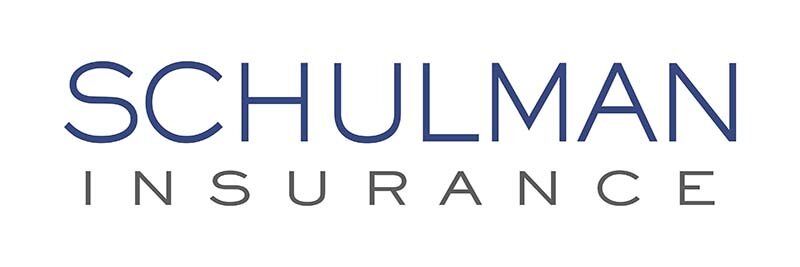2025 Cost of Living Adjustments
The IRS has released cost of living adjustments for 2025 under various provisions of the Internal Revenue Code (the Code). Some of these adjustments may affect your employee benefit plans.
Cafeteria Plans – Health Flexible Spending Arrangement
Annual contribution limitation
For plan years beginning in 2025, the dollar limitation under Code Section 125(i) for voluntary employee salary reductions for contributions to health flexible spending arrangements (health FSAs) increased from $3,200 to $3,300.
The Affordable Care Act (ACA) amended Code Section 125 to place a $2,500 limitation on voluntary employee salary reductions for contributions to health FSA, subject to inflation for plan years beginning after December 31, 2013.
Annual maximum carryover
For cafeteria plans that permit the carryover option, the maximum unused amount from a health FSA plan year that begins in 2025 that can be carried over to the following plan year is $660 (up from $640 in 2024).
In May 2020, the IRS issued Notice 2020-33 to increase the carryover limit for unused amounts remaining in a health FSA as of the end of a plan year from a static maximum of $500 to 20% of the currently indexed health FSA contribution limit for plans that have adopted the carryover option.
Qualified Transportation Fringe Benefits
For calendar year 2025, the monthly exclusion limitation for transportation in a commuter highway vehicle (vanpool) and any transit pass (under Code Section 132(f)(2)(A)) and the monthly exclusion limitation for qualified parking expenses (under Code Section 132(f)(2)(B)) increased from $315 to $325.
The Consolidated Appropriations Act of 2016 permanently changed the pre-tax transit and vanpool benefits to be at parity with parking benefits.
Highly Compensated
The compensation threshold for a highly compensated employee or participant (as defined by Code Section 414(q)(1)(B) for purposes of Code Section 125 nondiscrimination testing) for calendar year 2025 is $155,000.
Under the cafeteria plan rules, the term highly compensated means any individual or participant who for the preceding plan year (or the current plan year in the case of the first year of employment) had compensation in excess of the compensation amount as specified in Code Section 414(q)(1)(B). Prop. Treas. Reg. 1.125-7(a)(9).
At the time of this Bulletin, the 2026 dollar limitation under Code Section 414(q)(1)(B) concerning the definition of highly compensated employee or participant looking back to 2025 is not available. This Bulletin will be updated with this information when released.
Key Employee
The dollar limitation under Code Section 416(i)(1)(A)(i) concerning the definition of a key employee for calendar year 2025 is $220,000.
For purposes of cafeteria plan nondiscrimination testing, a key employee is a participant who is a key employee within the meaning of Code Section 416(i)(1) at any time during the preceding plan year. Prop. Treas. Reg. 1.125-7(a)(10).
At the time of this Bulletin, the 2025 dollar limitation under Code Section 416(j)(1)(A)(i) concerning the definition of a key employee looking back to 2025 is not available. This Bulletin will be updated with this information when released.
Non-Grandfathered Plan Out-of-Pocket Cost-Sharing Limits
As previously reported, the 2025 maximum annual out-of-pocket limits for all non-grandfathered group health plans are $9,200 for self-only coverage and $18,400 for family coverage.
These limits generally apply with respect to any essential health benefits (EHBs) offered under the group health plan. For coverage other than self-only (e.g., family coverage), the self-only annual out-of-pocket limit applies to each covered individual.
Health Reimbursement Arrangements
Qualified Small Employer Health Reimbursement Arrangements
For tax years beginning in 2025, to qualify as a qualified small employer health reimbursement arrangement (QSEHRA) under Code Section 9831(d), the arrangement must provide that the total amount of payments and reimbursements for any year cannot exceed $6,350 ($12,800 for family coverage), which increased from $6,150/$12,450 in 2024.
Excepted Benefit Health Reimbursement Arrangements
For plan years beginning in 2025, to qualify as an excepted benefit health reimbursement arrangement (EB HRA) under Treas. Reg. Section 54.9831-1(c)(3)(viii), the maximum amount that may be made newly available for the plan year for an excepted benefit HRA is $2,150 (increased from $2,100 in 2024).
Health Savings Accounts
As previously reported, the inflation adjustments for health savings accounts (HSAs) for 2025 were provided by the IRS in Rev. Proc. 2024-25.
Annual contribution limitation
For calendar year 2025, the limitation on deductions for an individual with self-only coverage under a high deductible health plan is $4,300; the limitation on deductions for an individual with family coverage under a high deductible health plan is $8,550.
HSA-compatible high deductible health plan
For calendar year 2025, an “HSA-compatible high deductible health plan” is defined as a health plan with an annual deductible that is not less than $1,650 for self-only coverage or $3,300 for family coverage, and the annual out-of-pocket expenses (deductibles, co-payments, and other amounts, but not premiums) do not exceed $8,300 for self-only coverage or $16,600 for family coverage. It should be noted that for family HDHP coverage, an individual embedded deductible cannot be less than $3,300.
Non-calendar year plans: In cases where the qualifying high deductible health plan renewal date is after the beginning of the calendar year, any required changes to the annual deductible or out-of-pocket maximum may be implemented as of the next renewal date. See IRS Notice 2004-50, 2004-33 I.R.B. 196, Q/A-86 (Aug.16, 2004).
Catch-up contribution
Individuals who are aged 55 or older and covered by a qualifying high deductible health plan may make additional catch-up HSA contributions each year until they enroll in Medicare. The additional contribution, as outlined in Code Section 223(b)(3) (B), is $1,000 for 2009 and thereafter.
Employer Action
Employers with plan years beginning on or after January 1, 2025 should ensure the correct limits are applied to respective benefit plan options.
